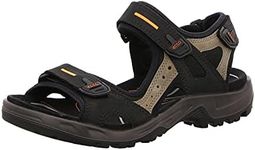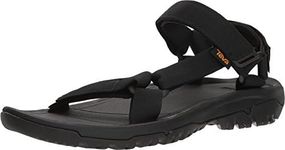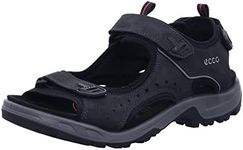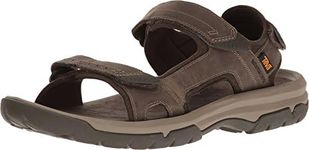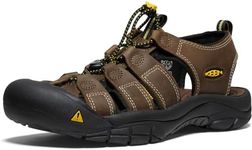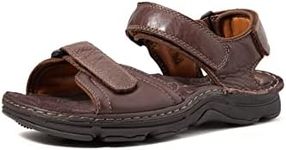Buying Guide for the Best Mens Walking Sandals
Choosing the right pair of men's walking sandals can make a significant difference in your comfort and overall experience, whether you're strolling through the city, hiking on trails, or enjoying a beach vacation. The key is to find a pair that fits well, provides adequate support, and suits your specific needs and preferences. Here are some important specifications to consider when selecting men's walking sandals.Fit and SizeFit and size are crucial for comfort and preventing blisters or other foot issues. Sandals should fit snugly but not too tight, allowing for some wiggle room for your toes. Sizes can vary between brands, so it's important to try them on or check size charts carefully. If you have wide or narrow feet, look for brands that offer different width options.
Arch SupportArch support is important for maintaining foot health, especially if you plan to walk long distances. Sandals with good arch support can help prevent foot pain and fatigue. Look for sandals with contoured footbeds that match the natural shape of your foot. If you have high arches, you may need more pronounced support, while flat feet might benefit from a more neutral footbed.
MaterialThe material of the sandals affects durability, comfort, and breathability. Common materials include leather, synthetic fabrics, and rubber. Leather is durable and molds to your feet over time, but it can be less breathable. Synthetic materials are often lighter and more breathable, making them ideal for hot weather. Rubber soles provide good traction and are often used in outdoor sandals.
AdjustabilityAdjustability features like straps and buckles allow you to customize the fit of your sandals. This is especially useful if your feet tend to swell throughout the day or if you need a more secure fit for active use. Look for sandals with multiple adjustable points, such as around the ankle and across the foot, to ensure a comfortable and secure fit.
TractionTraction is important for safety and stability, especially if you'll be walking on uneven or slippery surfaces. Sandals with good traction typically have textured or patterned soles that grip the ground well. If you plan to hike or walk on trails, look for sandals with rugged soles designed for outdoor use. For city walking, smoother soles may be sufficient.
Water ResistanceWater resistance is a key feature if you plan to use your sandals near water or in wet conditions. Water-resistant sandals are made from materials that dry quickly and resist damage from moisture. Look for sandals labeled as water-resistant or waterproof if you expect to encounter wet environments. This feature is particularly useful for beach vacations or rainy climates.
WeightThe weight of the sandals can affect your comfort and energy levels during long walks. Lightweight sandals are generally more comfortable for extended wear and reduce fatigue. However, heavier sandals may offer more durability and support. Consider your typical walking conditions and personal preference when choosing between lighter and heavier options.


